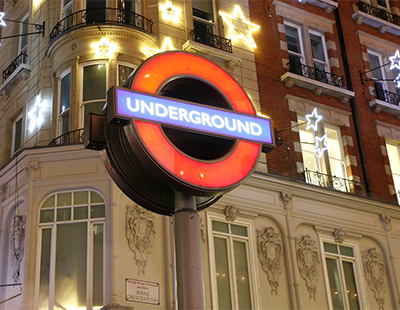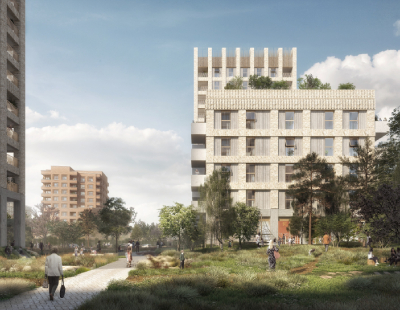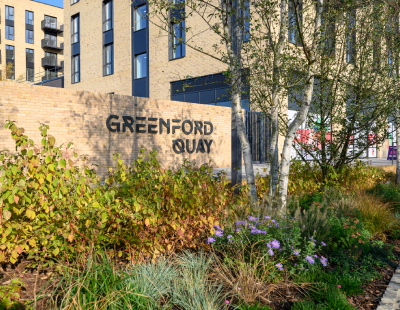Across all Tube lines the results were broadly consistent, but the strongest uplift of 3.1% above the wider borough was seen on the Jubilee Line and the DLR, lines which have stations in areas of widespread regeneration such as Stratford, Canary Wharf and Canning Town.
By contrast, the weakest growth uplift was for homes near District Line stations. That said, prices close to District Line stations still outperformed the wider market by 1.2% above the borough average of 8.6%.
CBRE also segmented the analysis to separate the periods before and after the global financial crisis, with the uplift in the latter period (post-2009) found to be higher, at 2.7% per year.
Additionally, the research looked at average yearly price growth in areas around National Rail and TfL rail stations in London, finding a similar overall uplift, at 1.7% per year.
“From its humble beginnings in 1863 when the Metropolitan Line opened its 3.7 mile stretch of track, connecting 7 stations from Paddington to Farringdon and carrying 9.5 million passengers a year, the London Underground has grown into the most important mode of transport for London's commuters. It now carries over 5 million passengers a day on 12 lines, with 300 stations and over 270 miles of track,” Jennet Siebrits, head of residential research at CBRE, said.
“'Mind the Gap' is a familiar safety warning for London underground passengers. But for house buyers and investors, it's the gap between the price growth of properties near Tube stations and the wider area that's caught our attention.”
Siebrits said that it’s now common knowledge that people will pay a premium to live close to great transport links. Recent analysis by Nationwide, for example, showed properties close to transport hubs achieved a £42,000 premium.
“But both owner-occupiers and landlords are interested in how this investment is likely to perform over time,” Siebrits continued. “The good news is CBRE research shows that the investment pays off, and over time price growth of properties near Tube stations outperforms other homes in the wider area by 2.1% per annum.”
For buyers, she said, it’s good to know that paying a premium for transport convenience now is an investment that will appreciate greater value in the long-term. Likewise, for investors looking for properties that will provide good rental returns and attract tenants, they have the added assurance that properties are likely to outperform against the wider market.
“The Tube lines with some of the best house price growth are in areas where there has been infrastructure investment and wider regeneration, which also has a positive impact on price,” Siebrits added. “For instance, the extension of the Jubilee Line to Canada Water, Canary Wharf and Stratford in zones 2/3 has coincided with widespread regeneration. Prices of homes near Jubilee line stations grew by 3.1% more than the local authority average, and they are among the most desirable places to live.”
Siebrits said developers have been able to unlock value in areas set to benefit from infrastructure investment, as part of wider regeneration and placemaking. “Areas to watch include near the new Northern line stations and the proposed Bakerloo line extension, as well as the much-anticipated Crossrail.”
How has commuter behaviour affected house prices?
The introduction of the congestion charge in 2004 has resulted in a 30% fall in congestion in the zone it covers, while traffic in central London has since remained stable or declined by a small amount each year.
CBRE research finds that, since the introduction of the congestion charge, the gap between price growth of properties near a Tube compared with the wider area has risen, from an annual average uplift of 1.9% (between 1998-2009) to 2.7% annually after 2009.
With the introduction of the ultra -ow emission zone in April 2019 adding a further charge on older private cars, CBRE argues there is now even greater impetus to switch to public transport.
“The congestion charge has influenced London commuter behaviour, and it is one of a whole range of trends we're seeing here and in cities around the world,” Siebrits concluded. “Switching to public transport or cycling is also driven by the desire to live in greener, cleaner cities with better air quality. Wanting to live close to a Tube station is also a consequence of the rise in flexible working patterns, including working from home and travelling to central London for meetings, or working from flex spaces in different locations.”
There are currently a number of new homes developments near Tube stations including Grand Union in Brent, London Dock in Wapping, Brunel Street Works near Canning Town and White City Living.
House price growth along the Tube network
Table 1: House price growth within 500m of a tube station, zone 2 and outwards, last 20 years
|
|
Average annual house price growth, last 20 years (Q4 1998 – Q4 2018)
|
|
Tube line
|
Within 500m of tube station
|
London borough average
|
Outperformance, tube station vs borough
|
|
Bakerloo
|
10.6%
|
8.6%
|
2.0%
|
|
Central
|
11.4%
|
8.7%
|
2.7%
|
|
Circle
|
11.2%
|
9.1%
|
2.1%
|
|
Docklands Light Railway
|
12.5%
|
9.3%
|
3.1%
|
|
District
|
9.8%
|
8.6%
|
1.2%
|
|
Hammersmith & City
|
10.7%
|
9.1%
|
1.6%
|
|
Jubilee
|
12.0%
|
8.9%
|
3.1%
|
|
Metropolitan
|
10.7%
|
8.3%
|
2.5%
|
|
Northern
|
10.2%
|
8.5%
|
1.7%
|
|
Piccadilly
|
10.3%
|
8.4%
|
2.0%
|
|
Victoria
|
10.7%
|
9.1%
|
1.6%
|
|
All lines
|
10.9%
|
8.8%
|
2.1%
|










.png)









Join the conversation
Be the first to comment (please use the comment box below)
Please login to comment